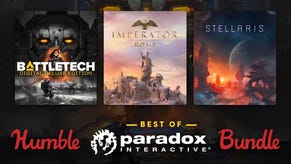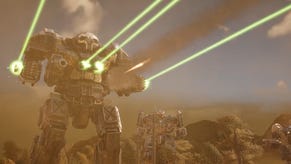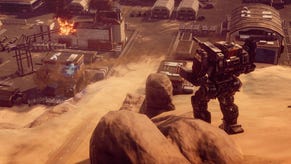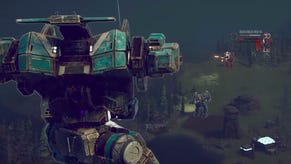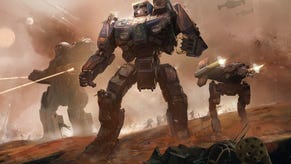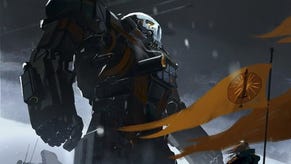BattleTech review - long overdue turn-based spin on a strategy great
MechsCom.
For a tabletop strategy as revered as BattleTech, it's remarkable that it's taken this long - close to 35 years, by crikey - for a dedicated turn-based video game to emerge. Okay, sure, Westwood's early brace of proto-Dune strategy RPGs came pretty close to transposing the heraldry of wargaming's premier trouser-tank battle system, but it's unfortunate that in the years since, BattleTech has become synonymous with - and subordinate to - the MechWarrior first-person action simulations of the 90s. For strategy fans to have been denied an authentic BattleTech experience for so long is almost as tragic as Robot Jox's continued obscurity relative to the success of Pacific Rim.
Still, although it was deemed necessary that some patient fans put their hands in their pockets first, the fact that we now have BattleTech on PC adds weight to the old adage that good things come to those who wait. For a game that has had to make up for lost time and maintain a level of faithfulness, all while attempting to impose some authority on modern genre champions like the XCOM series, developer Harebrained Schemes has more than enough reason to be proud. This BattleTech is as authentic a recreation of the tabletop classic as you could hope for.
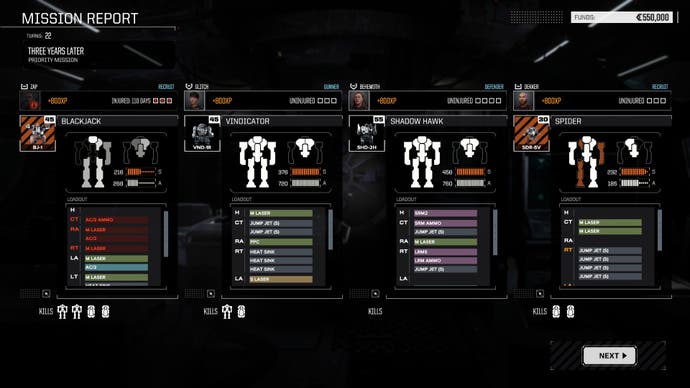
Not that this slavishly follows the rules first laid down in 1984; more that it remains true to the spirit of the source material. Admittedly it's been decades since I laid eyes on one of FASA's old Technical Readouts, thus I'd be hard pressed to judge the game's adherence to scripture. However, the essence of BattleTech's techno-feudal aesthetic, together with allowing players to dive into its expansive lore to a depth that suits them, is largely what makes this interactive edition a success.
The presentation isn't flashy, but it sets the tone perfectly. And while the dialogue isn't fully voiced - and in fact is noticeably lacking in one or two dramatic non-deliveries - the characterisation and writing is taut and strong, with barely a word wasted throughout. I realise I might be damning the game with faint praise, it being of a genre that should be judged first and foremost on the strength of its gameplay and turn-based systems, but the accessibility of the background material, the character design, the dialogue in service to a plot to enact vengeance for a deposed queen, are perhaps my favourite BattleTech elements - although how much of that is down to low expectations brought about by Warhammer 40K fatigue is unknown.
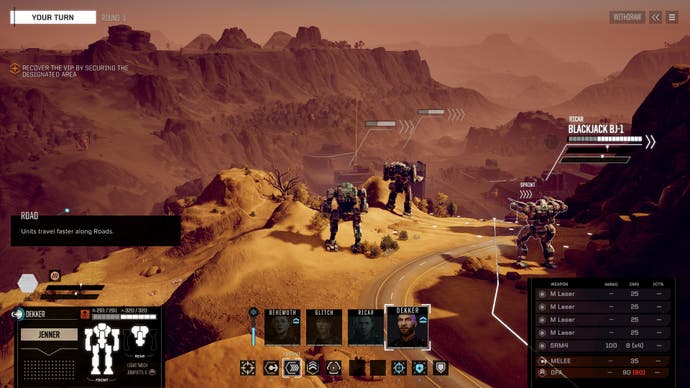
Let's talk about BattleTech's gameplay and systems, which as you might have expected takes a great deal of inspiration from contemporary XCOM, with just enough in the way of "beer and pretzels" wargame hexery - as typified by Panzer General and its ilk - to feel suitably distinct rather than revolutionary.
As BattleTech vets will know, in any encounter players command a lance of four mechs, with twinkle-toed light mechs doing their scouting first and the lumbering assault mechs ending each turn. None of them are particularly manoeuvrable machines, so there's no ducking behind the cover of a space Waitrose or anything like that. You simply select where to move your units, choosing a direction to face and then select your weapons and a target depending on what the likeliness of a scoring a hit is. Pretty standard stuff, I think you'll agree.
BattleTech gets interesting when the lasers start lighting up the map. Damage is randomly distributed across various leg and torso sections, but the aim is to bring down the enemy either by taking out their legs, or the central torso (cockpit) area. To that end a mechwarrior's ability to focus fire once enough morale has been accumulated can be devastating, but it's the need to manage heat and stability levels that defines BattleTech's venerable combat system. Heat builds up as mechs fire their weapons, which if not vented in time can, at best, limit offensive output. Stability meanwhile is a side-effect of being hit, typically by missiles: Tumble to the ground after a repeated pummelling and pilot injuries will occur, as well your mech being open to targeted critical attacks.

Being able to field more mechs per encounter, deploy countermeasures and use off-field support would have been welcome evolutions to the formula, as would some implementation of friendly fire and a few more mechwarrior abilities; for as much as heat and stability help distinguish BattleTech's brand of turn-based combat from the competition, the breadth of tactics required to ensure victory are a little narrow.
Since concentrated firepower is king, players will want to deploy the heaviest mechs they can, keeping them in a tight formation in order to focus fire. It doesn't hurt to have a light mech unloading the odd salvo into an enemy's flank from time to time, but for the most part you'll be needing to keep your squad of techno-pants within a half a dozen hexes of one another, while trying to keep the approach of enemy units as staggered as possible. Do that and you can't really go wrong.
The reason you'll not want to deviate too much from the above strategy is because it's supremely efficient, and efficiency is fundamental to minimising risk. As the leader of a mercenary outfit, choosing missions is a trade off between maximising income in terms of money and resources, versus the cost in time and money to replace damaged mechs and injured crew. There are bills to pay, which means you have to keep the mission money coming in, and while losing a mechanical arm and a leg now and again isn't going to put a massive dent in your income, but if you lose mech parts regularly, expensive reinforcements and repairs will slow down your rate of income by postposing missions past another end-of-the-month assault on your bank balance.
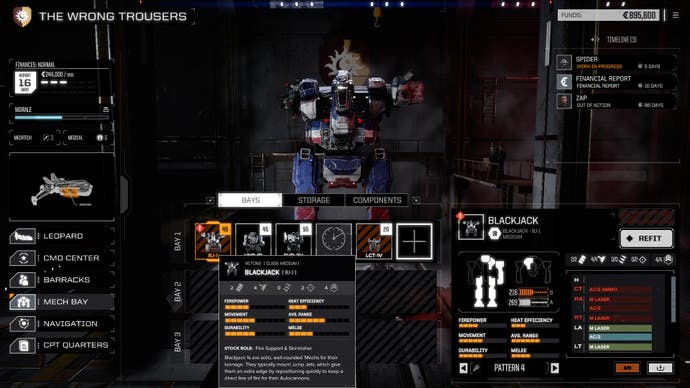
Aside from the battles playing out in much the same way, across maps that are more diverse in their colour schemes than they are in terms of distinguishing features, BattleTech's issues and annoyances are fairly inconsequential and easily patched. The poorest feature is also the most superficial: the in-game camera work, which isn't nearly as dynamic as the options screen wants us to believe. Yes, there are plenty of sliders for how often the camera might kick in for any given action, but the panning and zoom is frequently out of sorts and while the current selection of drunken camera operator views are better than turning the action sequences off altogether, the framing is so off that half of what you expect to see is either out of shot or obscured by scenery.
In any case, BattleTech's deficiencies are more than offset by its triumphs. Take its crew development - as with its XCOM HQ equivalent, aboard your ship you'll want to balance the books while increasing your stock of weapons and equipment. Your bridge crew are considerably more engaging than XCOM research officers and staff, and more integrated in the storyline, which is less an arms race and more a battle for survival in a world that, with its great houses and clans, could pass as the PG-rated sci-fi equivalent of Game of Thrones. Meanwhile your mechwarriors, as with XCOM's soldiers, start off as disposable grunts that through investment in abilities and equipment become characters you can't help but feel attached to - in spite of the lack of customisation options.
Perhaps BattleTech's worst crime is that, while it borrows many ideas from XCOM and augments them within its own deftly-weaved backstory, at the fundamental level - on the field of battle - it can't quite match XCOM's arms race-driven unit diversity or mission variety. That said, when it comes to having iconic suits of sci-fi armour balanced across wind-swept hillsides and firing laser beams into the night, it's almost impossible not to enjoy the spectacle of mechanical strides fighting at the scale and in the time signature they were originally designed to operate in.


